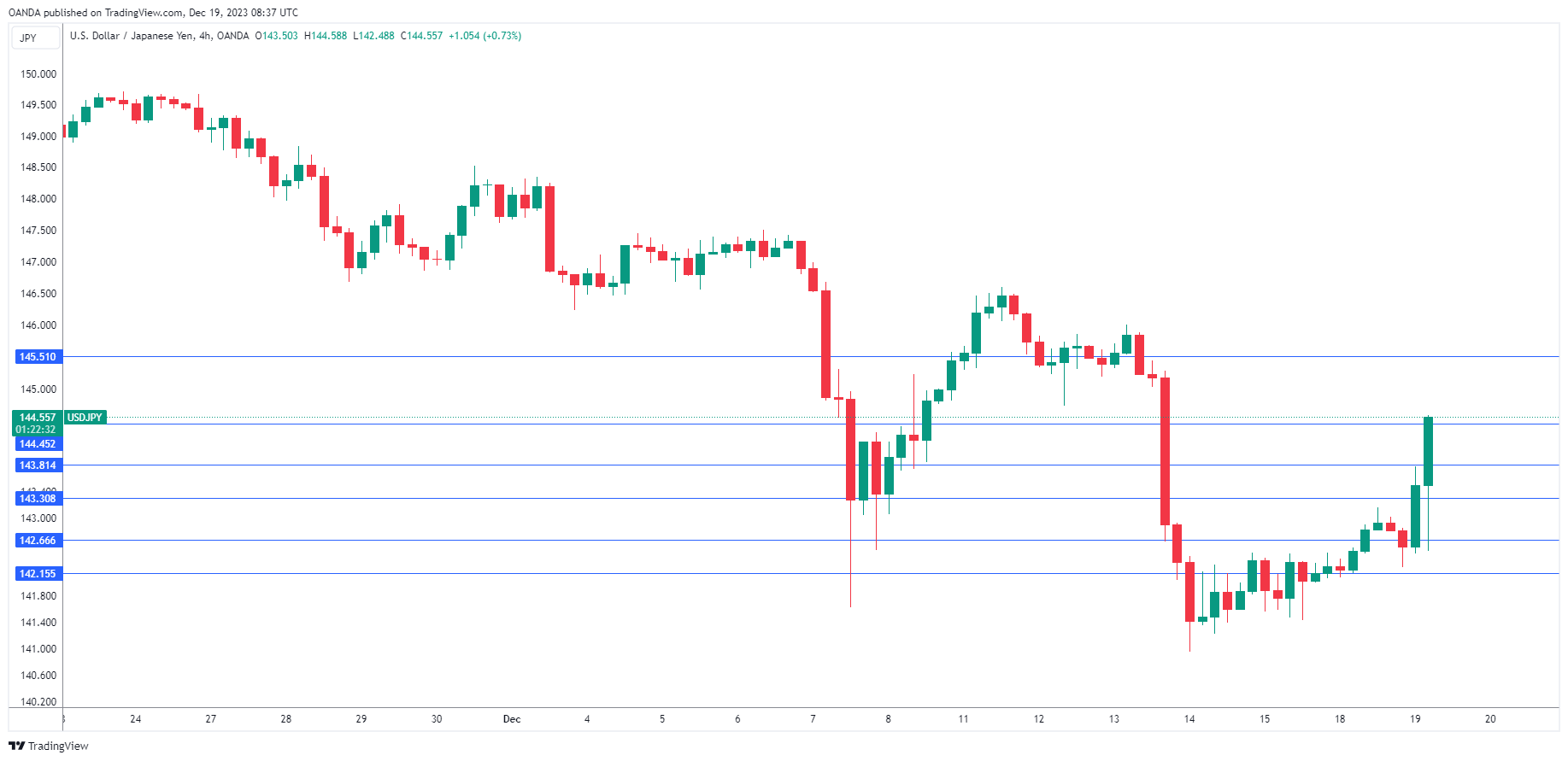USD/JPY: Japanese Yen Slides as BoJ Stands Pat
MarketPulse | Dec 19, 2023 03:56AM ET
- BoJ makes no changes to policy or guidance
- Yen down over 1%
- USD/JPY has pushed past resistance at 143.30 and 143.81 and is testing resistance at 144.45. Above, there is resistance at 145.51
- There is support at 142.66 and 142.15
The Japanese yen is sharply lower on Tuesday. In the European session, USD/JPY is trading at 144.42, up 1.15%. The yen surged 1.95% last week but has faltered and pared most of those gains this week.
BoJ Maintains Policy
Tuesday’s Bank of Japan meeting was a live meeting, as there was speculation that the central bank might make a move after some broad hints of tighter policy from senior Bank officials. In the end, the meeting was a non-event as even a tweak in language was not to be found, and disappointed market participants gave the yen a thumbs down.
The BoJ maintained its policy settings, but speculation is high that the central bank will tighten policy next year, at a time when the other major banks are loosening policy as inflation moves lower. Governor Ueda acknowledged that prices and wages are moving higher but said more time was needed to determine if a “positive wage-inflation cycle will fall in place”. Core inflation has remained above the 2% target for some 19 months, but the BoJ has argued that inflation has been driven by cost-push factors and is not sustainable. At a post-meeting press conference, Ueda rejected exiting from the Bank’s ultra-loose policy, saying that uncertainty over the outlook is “extremely high”.
The markets have been exuberant since the Fed meeting last week when Fed Chair Powell penciled in three rate cuts next year. Traders are far more bullish and are betting on six rate hikes in 2024, starting in March.
We’re seeing some pushback from the Fed to reign in market expectations. On Friday, New York Fed President John Williams said a rate cut in March was “premature” and even warned that rates could move higher if inflation were to stall or reverse. Cleveland Fed President Mester said on Monday that the markets are a “bit ahead” of the Fed on rate cuts, as the Fed was focused on how long it would need to maintain rates in restrictive territory, while the markets were focused on rate cuts.

USD/JPY Technical
Original Post

Trading in financial instruments and/or cryptocurrencies involves high risks including the risk of losing some, or all, of your investment amount, and may not be suitable for all investors. Prices of cryptocurrencies are extremely volatile and may be affected by external factors such as financial, regulatory or political events. Trading on margin increases the financial risks.
Before deciding to trade in financial instrument or cryptocurrencies you should be fully informed of the risks and costs associated with trading the financial markets, carefully consider your investment objectives, level of experience, and risk appetite, and seek professional advice where needed.
Fusion Media would like to remind you that the data contained in this website is not necessarily real-time nor accurate. The data and prices on the website are not necessarily provided by any market or exchange, but may be provided by market makers, and so prices may not be accurate and may differ from the actual price at any given market, meaning prices are indicative and not appropriate for trading purposes. Fusion Media and any provider of the data contained in this website will not accept liability for any loss or damage as a result of your trading, or your reliance on the information contained within this website.
It is prohibited to use, store, reproduce, display, modify, transmit or distribute the data contained in this website without the explicit prior written permission of Fusion Media and/or the data provider. All intellectual property rights are reserved by the providers and/or the exchange providing the data contained in this website.
Fusion Media may be compensated by the advertisers that appear on the website, based on your interaction with the advertisements or advertisers.